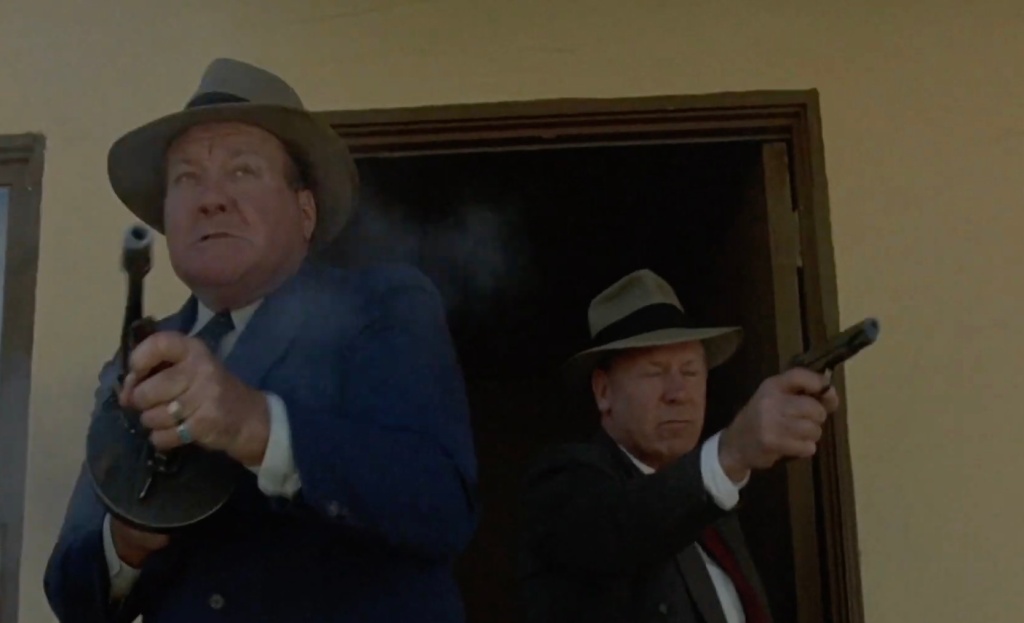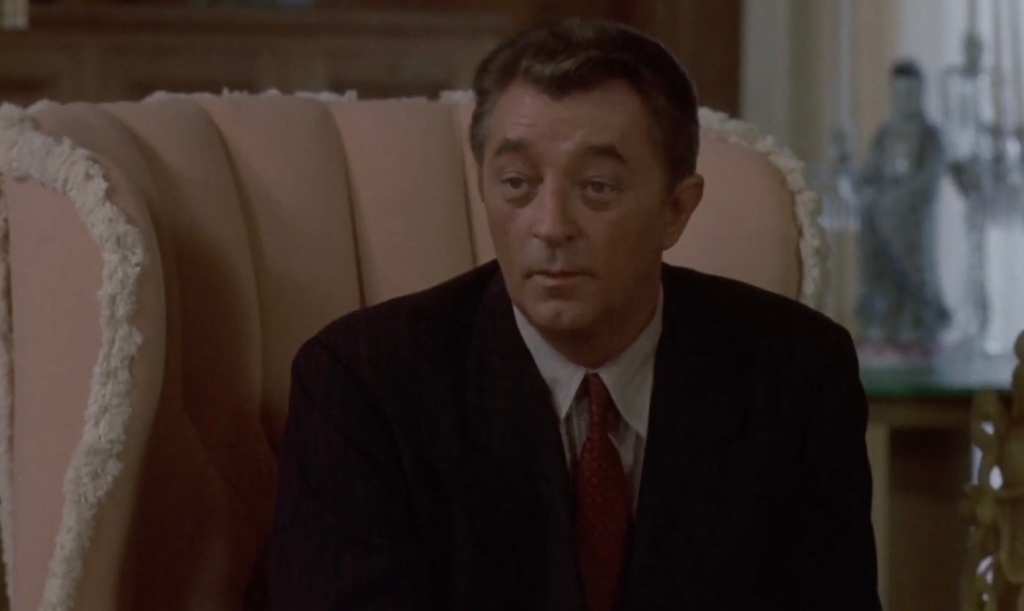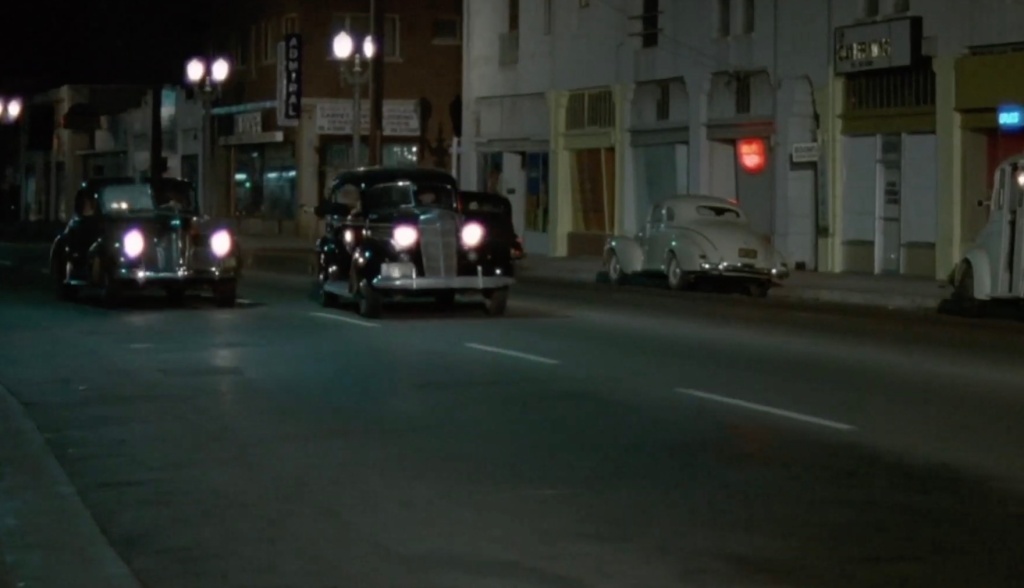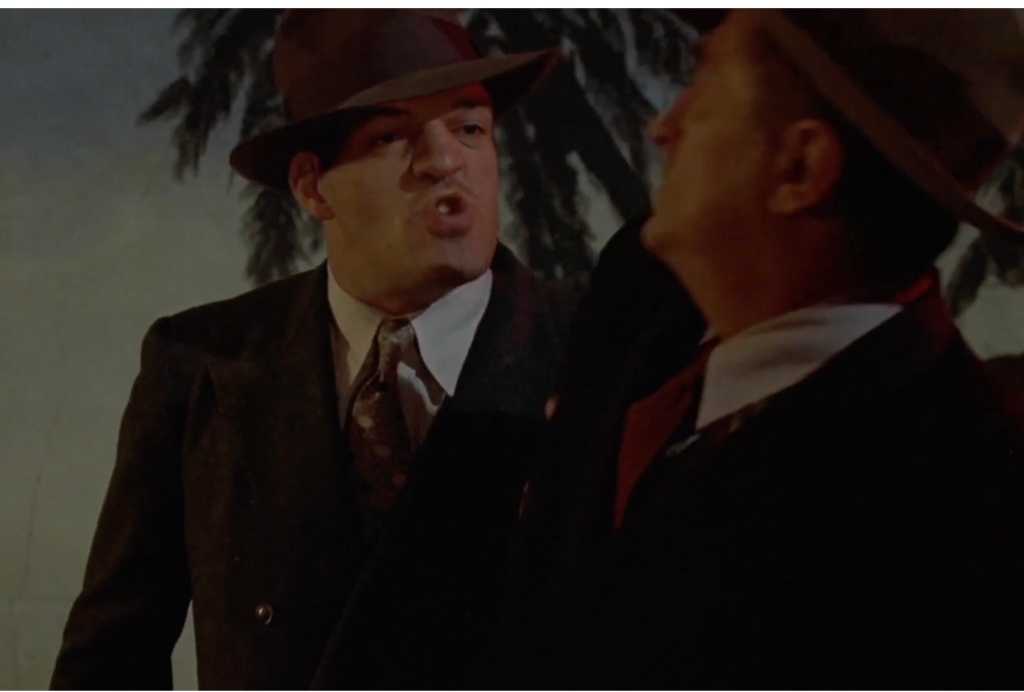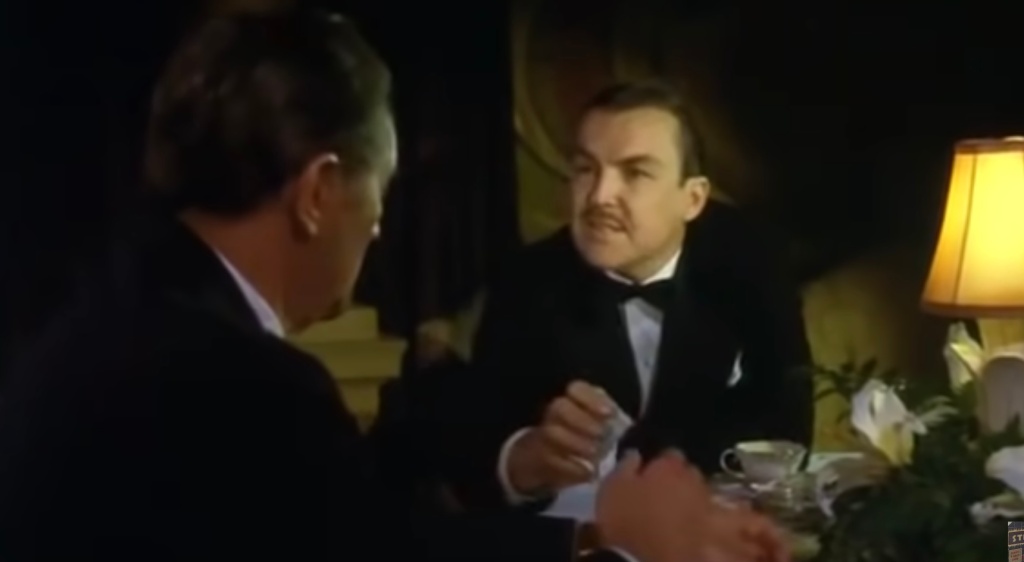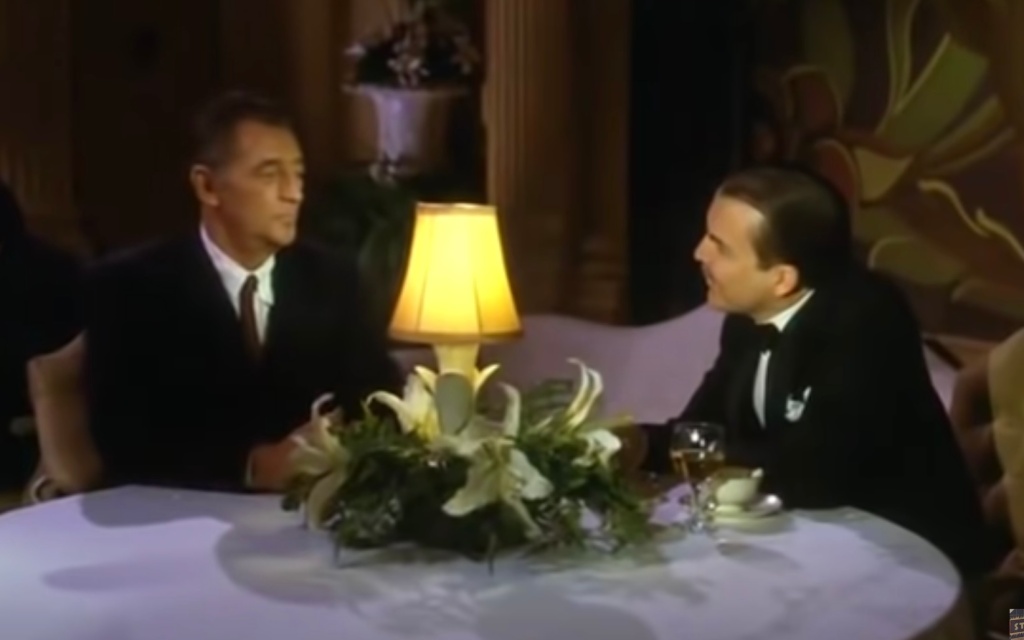“Farewell, My Lovely” is a neo-noir film directed by Dick Richards and based on the book of the same name by Raymond Chandler. This is the second adaptation of the book; the first adaptation, “Murder, My Sweet,” has also been reviewed in this blog.
Robert Mitchum plays Philip Marlowe, Chandler’s famous fictional sleuth, in this movie that also stars Charlotte Rampling, John Ireland, Jack O’Halloran, Sylvia Miles, Harry Dean Stanton, and novelist Jim Thompson. In this movie, the story follows Marlowe as he attempts to find the missing girlfriend of a former convict.
The plot is set in 1940s Los Angeles and begins with an aging Marlowe (Mitchum) holed up in a hotel, hiding from the police. He convinces Lieutenant Nulty (Ireland) to come to his hotel for a private conversation. Nulty is under pressure from his department to bring in Marlowe, as one of Marlowe’s clients is absconding and wanted for questioning in several homicides.
When Nulty arrives, Marlowe begins his narration. A few weeks earlier, a wealthy couple had hired Marlowe to find their daughter, who had run away. Marlowe finds her at a nightclub and brings her outside, where she is taken in by her parents.
Just then, a giant of a man (Jack O’Halloran) assertively accosts Marlowe and introduces himself as Moose Malloy. Malloy, who has been in prison for seven years for robbing a bank, wants to find his missing girlfriend, Velma. Moments later, men in a moving car attempt to gun down Malloy, but Marlowe manages to pull both of them to safety.
Malloy takes Marlowe to a bar located in a predominantly Black neighborhood. The bar, once under white management, now has a Black owner. Malloy claims Velma worked there when it had a white owner. Malloy aggressively questions the bar’s owner, and the encounter turns deadly as Malloy kills the man in self-defense. Upon Marlowe’s suggestion, Malloy leaves the area before the police arrive.
After talking to the cops, Marlowe visits a dilapidated hotel opposite the bar and bribes the desk clerk to elicit information about the bar from a few years ago. He visits a musician, Tommy Ray (Walter McGinn), who used to play at the bar during its days under white ownership. Tommy is in an interracial marriage with a Black woman and has a young son. As such ‘behavior’ was frowned upon in the 1940s, Tommy was excommunicated from the bar, ending his career. From the information provided by Tommy, Marlowe meets a former friend of Velma, Jessie Halstead Florian (Sylvia Miles), who used to be a performer but is now an alcoholic. Using information from Florian and a photograph from Tommy, Marlowe finds Velma at an insane asylum but later realizes the person he found is not Velma.
Around this time, Marriott, an effeminate man, visits Marlowe and asks him to accompany him to exchange cash for a stolen jade necklace. Marlowe accepts the task.
Things turn deadly when Marlowe is knocked out cold and Marriott is murdered by unseen assailants. Marlowe’s investigation of the mysterious jade necklace leads him to an exquisite mansion owned by Judge Grayle (Thompson) and his alluring wife Helen (Rampling).
As the plot unfolds, Marlowe encounters more unsavory characters, including the notorious madam Amthor (Kate Murtagh), who kidnaps and drugs him. Sylvester Stallone also appears, playing one of Amthor’s thugs. Interestingly, in “Murder, My Sweet,” Amthor is a male psychic.
As more murders are committed, Marlowe comes face to face with a former acquaintance, Laird Brunette (Anthony Zerbe), a mobster who wants to meet Malloy. An action-packed climax on Brunette’s yacht ties up the loose ends and reveals a diabolical scheme that explains the connections between all the individuals in the narrative.
While “Murder, My Sweet” is considered the better movie, featuring a younger Marlowe, this movie holds its own, and Mitchum makes a great aging Marlowe. The screenplay by David Zelag Goodman features well-written dialogue, and the cinematography by John A. Alonzo, with well-constructed sets depicting 1940s LA, is also noteworthy. The movie’s cinematography is more contemporary, as expected, and features more venues.
This is a good movie and worth a watch for those who prefer color movies to old classics and is certainly one I would recommend for all thriller buffs.
“Farewell, My Lovely” is a neo noir film directed by Dick Richards and based on a book by the same name, by Raymond Chandler. This is the second adaptation of the book. The first adaptation of the book, “Murder, My Sweet” has also been reviewed in this blog.
Robert Mitchum plays Phillip Marlowe, Chandler’s famous fictitious sleuth in this movie that also stars Charlotte Rampling, John Ireland, Jack O’Halloran, Sylvia Miles, Harry Dean Stanton and novelist Jim Thompson. “While Murder, My Sweet ” was released in the classic film noir era, this version of the book released in 1975 includes nudity, a homosexual theme and more gore that could not be included in the earlier movie due to a more stringent censorship code. In this movie, the story follows Marlowe as he attempts to find the missing girlfriend of a former convict.
The plot is set in LA of the 40s, begins with an aging Marlowe(Mitchum) holed up in a hotel, hiding from the police. He manages to convince Lieutenant Nulty(Ireland) to come to his place of stay alone for a private conversation. Nulty is under pressure from his department to bring in Marlowe, as one of Marlowe’s clients is absconding and is wanted for questioning for several homicides.
When Nulty arrives, Marlowe begins his narration. A few weeks earlier, a rich couple had hired Marlowe to find their daughter who has absconded. Marlowe finds her at a nightclub and brings her outside where she is taken in by her parents.
Just then, a giant of a man( Jack O’Halloran ) assertively acousts Marlowe and introduces himself as Moose Malloy. Malloy, who has been in the slammer for seven years for robbing a bank, wants to find his missing girlfriend, Velma. Moments later, a men in a moving car attempt to gun down Malloy but Marlowe manages to pull Malloy and himself to safety.
Malloy takes Marlowe to a bar located in a colored area of the city. The bar that once was under white management now has a black owner. Velma, Malloy claims worked at the bar, when it had a white owner. Malloy aggressively questions the bar’s owner, and the encounter turns deadly as Malloy kills the man in self defense. Upon Marlowe’s suggestion, Malloy leaves the area before the police arrive.
After Talking the cops, Marlowe visits a dilapidated hotel right opposite the bar and bribes the desk clerk to elicit information of the bar from a few years ago. He visits a musician, Tommy Ray ( Walter McGinn) who used to play in the bar during its days under white ownership. Tommy is in an interracial marriage with a black woman, and has a young son. As such ‘behavior’was frowned at in the 40s, Tommy was excommunicated from the bar and that was the end of his career. Marlowe meets a former friend of Velma, Jessie Halstead Florian (Sylvia Miles), who used to be a performer but is now an alcoholic from the information provided by Tommy. Using information from Florian and a photograph from Tommy, Marlowe finds Velma at an insane asylum but later realizes that the person he found is not Velma.
Around this time, Marriott, an effeminate man visits Marlowe and wants the latter to accompany him to make an exchange of cash for a stolen jade necklace. Marlowe accepts the task.
Things turn deadly when Marlowe is knocked out cold and Mariott is murdered by unseen assailants. Marlowe’s investigation of the mysterious jade necklace leads him to an exquisite mansion owned by Judge Grayle(Thomson) and his alluring wife Helen(Rampling).
As the plot unfolds Marlowe enocunters more unsavory characters including the notorious madam Amthor(Kate Murtagh) who kidnaps and drugs him. Sylvester Stallone is there too, playing the role of one of Amthor’s thugs. Interestingly in “Murder, My Sweet”, Amthor is a male psychic.
As more murders are commited, Marlowe comes face to face with a former acquaintance, Laird Brunette (Anthony Zerbe), a mobster, who wants to meet Malloy. An action packed climax that happens on Brunette’s yacht will tie up the loose ends and reveal a diabolical scheme that explains the connections between all individuals who are part of this narrative.
While “Murder, My Sweet” is considered the better movie, with a younger Marlowe, this movie holds it’s own and Mitchum makes a great aging Marlowe. The screenplay by David Zelag Goodman, with well written dialogs and the cinematography with well constructed sets that feature an LA of the 40s from John A. Alonzo are also noteworthy. The movie’s cinematography is more contemporary, as expected and features more venues.
This is a good movie and worth a watch, for those who prefer color movies to old classics and is certainly one I would recommend for all thriller buffs.

